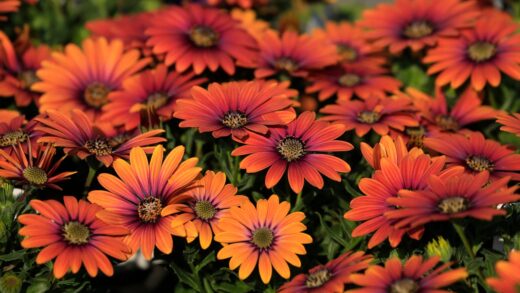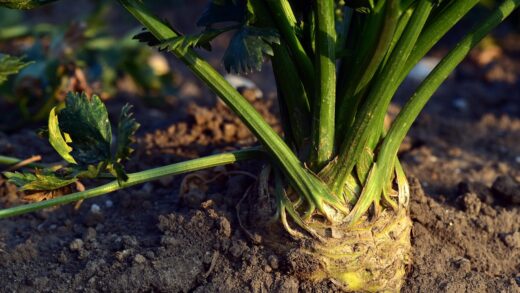The light requirements of the persian onion are a critical factor that dictates not only its survival but also its ability to produce the magnificent, globe-like blooms for which it is so highly prized. This is a plant that revels in sunshine, a trait inherited from its native habitat in the open, sun-drenched steppes and mountainous regions of Central Asia. Providing the right amount of light is perhaps the most straightforward yet most essential aspect of its care. Understanding why this sunlight is so crucial and the consequences of failing to provide it will empower you to select the perfect location in your garden, ensuring that your persian onions have the energy they need to perform at their absolute best and to grace your garden with their architectural splendour year after year.
To put it simply, the persian onion is a sun-worshipper and demands a position in full sun. This means it needs to receive at least six to eight hours of direct, unfiltered sunlight each day during its active growing season in the spring. This generous amount of light is the fuel for photosynthesis, the process by which the plant converts light energy into chemical energy in the form of sugars. These sugars are used to power all of the plant’s growth, from the development of its broad, strap-like leaves to the construction of the tall, sturdy stem that must support the large, heavy flower head.
The intensity and duration of sunlight have a direct impact on the quality of the floral display. A plant that receives ample sunlight will produce a thick, robust flower stalk that can stand tall and proud, easily supporting the weight of the bloom. The flower head itself will be larger, more densely packed with individual florets, and will display a richer, more vibrant purple colour. In essence, the more sunlight the plant can absorb during its growth phase, the more energy it has to invest in creating a truly spectacular flower.
Furthermore, the sunlight absorbed by the leaves in the period after flowering is just as important. Even as the flower begins to fade, the foliage continues to photosynthesize, capturing energy that is then transported down to the bulb to be stored for the following year’s growth. This is why it is so crucial to allow the leaves to die back naturally in a sunny location. Providing full sun throughout this entire period ensures that the bulb is fully “recharged,” guaranteeing a healthy and vigorous plant in the subsequent season.
The consequences of insufficient light
Planting a persian onion in a location that does not receive enough sunlight will lead to a series of predictable and disappointing outcomes. The most immediate and noticeable effect will be on the plant’s overall structure and stature. In a desperate attempt to reach for more light, a condition known as etiolation, the plant will produce stems that are weak, thin, and elongated. This results in a leggy, spindly appearance that is a far cry from the strong, upright posture that is characteristic of a healthy specimen.
These weakened stems are often incapable of supporting the weight of the flower heads, even if the plant manages to produce them. The stems may bend, flop over, or even break, especially during periods of wind or rain. This completely ruins the architectural and ornamental appeal of the plant. Instead of a proud, vertical accent in the garden, you are left with a languishing, untidy clump. This is one of the most common reasons for dissatisfaction with ornamental alliums, and it is almost always directly attributable to a lack of sufficient sunlight.
Beyond the structural issues, insufficient light will also have a profound impact on the flowering itself. A plant that is starved of light simply does not have the energy reserves needed to produce a large, impressive bloom. The flower heads will be noticeably smaller, the colour will be paler and less intense, and in some cases of very deep shade, the plant may fail to produce a flower at all. It will instead produce only a rosette of leaves as it struggles to gather enough energy just to survive.
Over time, a persian onion that is consistently grown in inadequate light will decline in vigour. Each year, the bulb will be less able to replenish its energy stores, leading to progressively weaker growth and poorer flowering. The bulb may even shrink in size and eventually perish altogether. It is a slow decline, but an inevitable one. Therefore, attempting to grow this sun-loving plant in a shady or partially shaded corner of the garden is a recipe for failure and a disservice to the plant’s magnificent potential.
Ideal planting locations
Given its need for full sun, the ideal planting location for the persian onion is in an open, unshaded area of the garden. This makes it a perfect candidate for sunny borders, island beds, and gravel gardens where it can receive unimpeded light throughout the day. When planning a border, it is best to place them in the middle or back, depending on the height of the other plants, ensuring they will not be overshadowed by taller perennials or shrubs as the season progresses.
Consider the path of the sun across your garden throughout the day when choosing a spot. A south-facing or west-facing aspect is typically the sunniest and most suitable. Be mindful of shadows cast by buildings, walls, fences, and large trees. A location that is sunny in the morning but becomes shaded in the afternoon will not be as good as one that receives consistent sun for a long stretch of the day. Remember that the sun’s position is lower in the sky during the spring, so shadows will be longer than they are in mid-summer.
Pairing persian onions with other sun-loving plants that have complementary growth habits is a great design strategy. They look wonderful rising above a carpet of lower-growing perennials, such as hardy geraniums, catmint (Nepeta), or lady’s mantle (Alchemilla mollis). The foliage of these companion plants can also help to hide the allium’s own leaves, which can begin to look a bit untidy as they start to die back just as the flowers are at their peak. This allows you to enjoy the stunning blooms without being distracted by the declining foliage.
Another excellent application is in a matrix planting within a gravel or prairie-style garden. Here, the tall, sculptural forms of the persian onions can create dramatic vertical accents among grasses and other drought-tolerant perennials. This type of planting mimics their natural habitat more closely and ensures they receive the high levels of light and excellent drainage they require. No matter the garden style, the fundamental rule remains the same: choose the sunniest spot you have available.
Light requirements throughout the year
The light requirements of the persian onion are most critical during its period of active growth, which spans from early spring to early summer. From the moment the first shoots emerge from the soil, the plant needs maximum sun exposure to fuel the rapid development of its leaves and flower stalk. This is the period when the plant is building its structure and accumulating the vast amount of energy needed for its spectacular floral display. Any lack of light during this time will have a direct and negative impact on the quality of the bloom.
After the flowering period is over, the plant’s need for sunlight remains high. Although the flower has faded, the leaves are still hard at work, photosynthesizing and sending energy back down to the bulb. This is the crucial “recharging” phase that determines the success of the following year’s display. It is for this reason that the plant should not be overshadowed by neighboring plants that may be reaching their peak height in mid-summer. Ensuring the dying foliage continues to receive plenty of sun is a key part of the plant’s annual cycle.
Once the foliage has completely died back and the bulb has entered its summer dormancy, its need for light ceases. The bulb is essentially asleep underground and does not require sunlight. It is now in a resting and storage phase, preferring the warmth of the sun-baked soil. This is followed by the winter dormancy, during which the bulb is also inactive and has no requirement for light.
This cyclical need for light is an important consideration when planning your garden. The persian onion needs its place in the sun during the spring and early summer. Because it is dormant and has no physical presence above ground for the latter half of the year, the space it occupies can be utilized by later-emerging, sun-loving annuals or perennials. This allows you to create a dynamic and multi-layered planting scheme that provides interest throughout the seasons, while still respecting the vital light requirements of the magnificent persian onion.



















